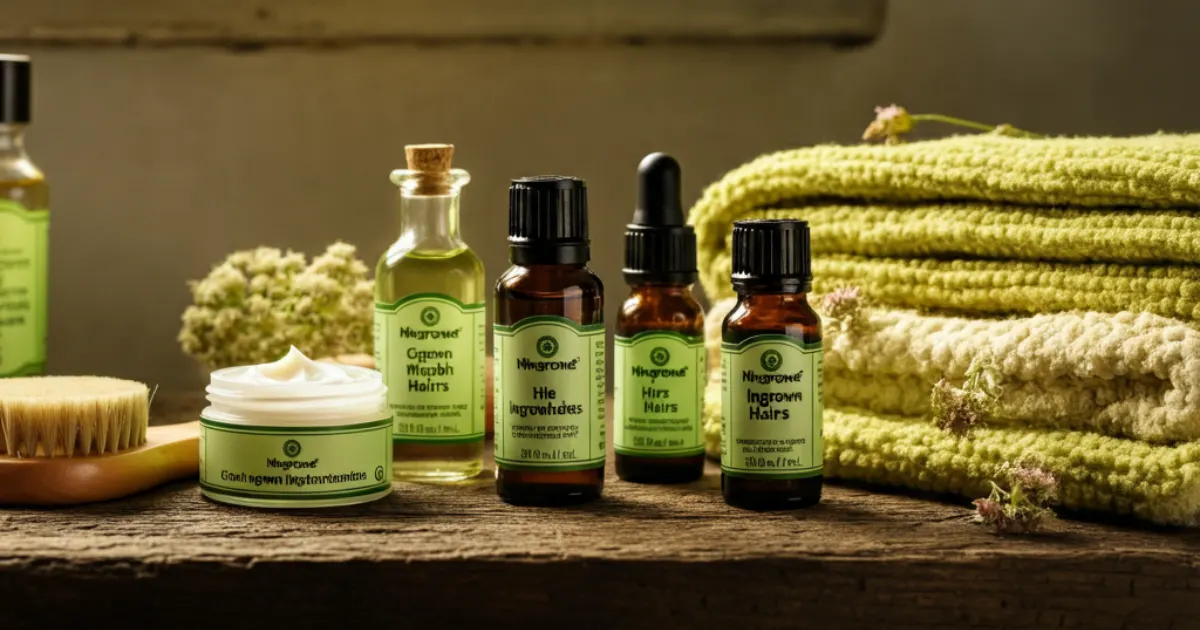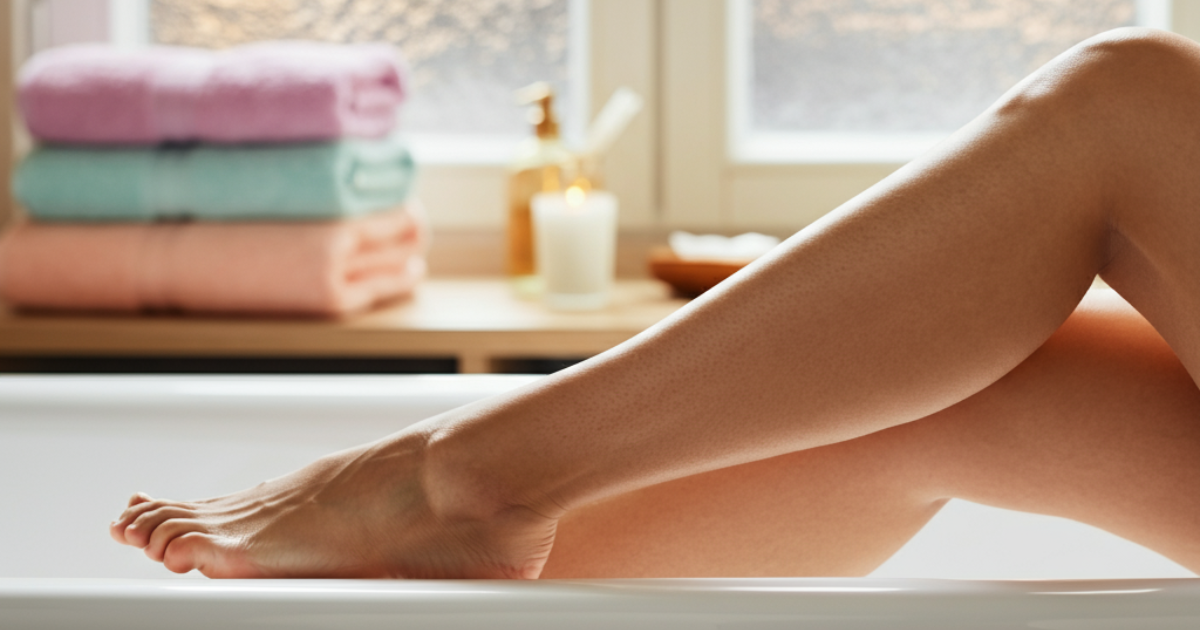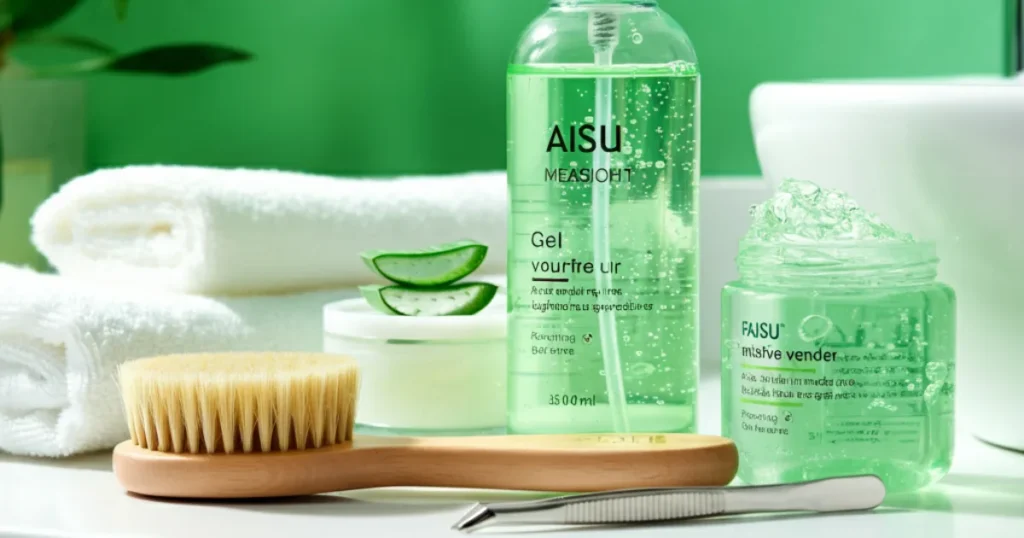Ingrown Hairs can be a real nuisance. They’re those pesky hairs that curl back or grow sideways into the skin instead of growing outward. This can cause redness, irritation, and even painful bumps. Whether you shave, wax, or pluck, ingrown hair can happen to anyone. But don’t worry! In this guide, we’ll walk you through fast and effective remedies to get rid of ingrown hairs and prevent them from coming back. Let’s dive in!
What Is an Ingrown Hairs?
An ingrown hair occurs when a hair grows back into the skin instead of outward. This often happens after shaving, waxing, or plucking. The hair gets trapped under the skin, causing irritation. You might notice a small red bump, itchiness, or even a pimple-like spot. Ingrown hairs are common in areas like the face, legs, armpits, and bikini line.
Anyone can get ingrown hair, but they’re more common in people with curly or coarse hair. Why? Curly hair tends to curl back into the skin after being cut. Don’t worry, though—there are plenty of ways to treat and prevent them!
Why Do Ingrown Hairs Happen?
Understanding why ingrown hair occur can help you prevent them. Here are the main causes:
- Shaving: Using a dull razor or shaving too closely can cut hair unevenly, making it more likely to grow back into the skin.
- Waxing or Plucking: These methods remove hair from the root, but new hair growth can get trapped under the skin.
- Tight Clothing: Wearing tight clothes can rub against the skin, pushing hair back into the follicle.
- Dry Skin: Dead skin cells can clog hair follicles, trapping hair beneath the surface.
- Curly Hair: Curly or coarse hair naturally curls back toward the skin, increasing the risk.
Now that you know the causes, let’s explore how to get rid of ingrown hairs quickly and safely.
Fast and Effective Remedies for Ingrown Hairs

Here are proven remedies to treat ingrown hairs at home. Most of these are simple, affordable, and use items you probably already have!
1. Warm Compress
A warm compress is one of the easiest ways to treat an ingrown hair. The warmth softens the skin and opens the pore, helping the hair break free.
How to Do It:
- Soak a clean washcloth in warm (not hot) water.
- Place it on the affected area for 5–10 minutes.
- Repeat 2–3 times a day.
- Gently massage the area to encourage the hair to surface.
This method works well for mild ingrown hairs. Be patient—it may take a few sessions.
2. Exfoliate Gently
Exfoliating removes dead skin cells that can trap hair. It also helps the hair break through the skin’s surface.
How to Do It:
- Use a gentle exfoliating scrub or a soft washcloth.
- Rub the area in small, circular motions.
- Do this 2–3 times a week.
- Avoid harsh scrubs, as they can irritate the skin further.
You can make a DIY scrub with sugar and olive oil. Mix 2 tablespoons of sugar with 1 tablespoon of olive oil for a natural exfoliant.
3. Tweezers (Use with Caution)
If the hair is visible, you can carefully use tweezers to free it. This works best for hairs just under the skin’s surface.
How to Do It:
- Sterilize tweezers with rubbing alcohol.
- Gently pull the hair out, following its natural direction.
- Don’t dig into the skin, as this can cause scarring or infection.
- Apply an antiseptic cream afterward.
Only try this if the hair is easy to reach. If it’s deep or painful, see a doctor.
4. Over-the-Counter Creams
Certain creams can reduce inflammation and help the hair come to the surface. Look for products with ingredients like salicylic acid or benzoyl peroxide.
How to Use:
- Apply a small amount to the bump as directed.
- Use once or twice daily.
- Stop if you notice irritation.
Always do a patch test first to ensure your skin doesn’t react badly.
5. Tea Tree Oil
Tea tree oil is a natural antiseptic. It reduces inflammation and fights bacteria, which can prevent infection in ingrown hair bumps.
How to Use:
- Dilute tea tree oil with a carrier oil (like coconut oil). Use a 1:10 ratio.
- Apply a drop to the affected area.
- Leave it on for 10–15 minutes, then rinse.
- Use once daily.
Don’t use undiluted tea tree oil—it can irritate your skin.
6. Aloe Vera
Aloe vera soothes irritated skin and reduces redness. It’s gentle and great for sensitive skin.
How to Use:
- Apply pure aloe vera gel to the ingrown hair.
- Leave it on for 20 minutes, then rinse.
- Repeat twice daily.
You can use fresh aloe from a plant or store-bought gel. Make sure it’s 100% pure aloe.
7. Apple Cider Vinegar
Apple cider vinegar has anti-inflammatory properties. It can help reduce swelling and soften the skin.
How to Use:
- Dilute apple cider vinegar with water (1:3 ratio).
- Dab it on the bump with a cotton ball.
- Leave it for 5–10 minutes, then rinse.
- Use once a day.
Avoid this method if you have sensitive skin, as it may sting.
When to See a Doctor
Most ingrown hairs go away with home remedies. But in some cases, you should seek medical help. Visit a doctor if:
- The bump is very painful or swollen.
- You see signs of infection (pus, warmth, or fever).
- The ingrown hair doesn’t improve after a week.
- You have recurring ingrown hair in the same area.
A doctor may prescribe a stronger cream or perform a minor procedure to remove the hair.
How to Prevent Ingrown Hairs

Prevention is better than treatment! Here are simple tips to stop ingrown hairs from forming:
1. Improve Your Shaving Technique
Shaving is a common cause of ingrown hairs. Follow these tips for smoother, safer shaving:
- Use a sharp, single-blade razor. Dull blades increase irritation.
- Shave in the direction of hair growth, not against it.
- Use shaving cream or gel to lubricate the skin.
- Rinse the razor after each stroke to keep it clean.
- Don’t shave too closely to the skin.
2. Exfoliate Regularly
Regular exfoliation prevents dead skin from clogging hair follicles. Exfoliate 2–3 times a week using a gentle scrub or loofah.
3. Moisturize Daily
Keeping your skin hydrated prevents dryness, which can trap hairs. Use a lightweight, non-comedogenic moisturizer daily.
4. Avoid Tight Clothing
Tight clothes can rub against your skin and cause ingrown hairs. Opt for loose, breathable fabrics, especially after hair removal.
5. Consider Hair Removal Alternatives
If ingrown hairs are a constant problem, try other hair removal methods:
- Laser Hair Removal: Reduces hair growth over time, lowering the risk of ingrown hairs.
- Depilatory Creams: These dissolve hair without cutting it, reducing the chance of ingrown hairs.
- Electric Trimmers: Trimmers cut hair above the skin, preventing it from curling back.
Talk to a dermatologist to find the best option for you.
Myths About Ingrown Hairs
There are some common misconceptions about ingrown hairs. Let’s clear them up:
- Myth: Ingrown hair only happen to people with curly hair.
Truth: Anyone can get ingrown hair, though curly hair increases the risk. - Myth: Popping the bump will fix it.
Truth: Popping can lead to infection or scarring. Use gentler methods instead. - Myth: Ingrown hairs always need professional treatment.
Truth: Most cases can be treated at home with simple remedies.
Lifestyle Tips for Healthy Skin
Healthy skin is less prone to ingrown hairs. Here are some habits to adopt:
- Stay Hydrated: Drink plenty of water to keep your skin soft and supple.
- Eat a Balanced Diet: Foods rich in vitamins A, C, and E support skin health.
- Cleanse Gently: Wash your skin daily to remove dirt and oil without stripping moisture.
- Avoid Over-Exfoliating: Too much exfoliation can irritate your skin and worsen ingrown hairs.
FAQs About Ingrown Hairs
Q: How long does it take for an ingrown hair to go away?
A: With proper care, most ingrown hairs resolve in 1–2 weeks. Severe cases may take longer.
Q: Can ingrown hairs cause scars?
A: Yes, picking or digging at ingrown hairs can lead to scarring. Treat them gently to avoid this.
Q: Are ingrown hairs contagious?
A: No, ingrown hairs aren’t contagious. But if they get infected, bacteria can spread to nearby skin.
Q: Can I prevent ingrown hairs completely?
A: You can reduce the risk with proper hair removal techniques and skincare, but it’s hard to prevent them entirely.
Final Thoughts
Ingrown hairs can be annoying, but they’re treatable with the right approach. By using remedies like warm compresses, exfoliation, and natural treatments like aloe vera, you can get rid of ingrown hairs quickly. To prevent them, focus on good shaving habits, regular exfoliation, and keeping your skin hydrated. If an ingrown hair doesn’t improve or becomes painful, don’t hesitate to see a doctor.
With these tips, you can say goodbye to ingrown hairs and hello to smooth, healthy skin! Try these remedies today and share your results. Got a favorite tip? Let us know!

